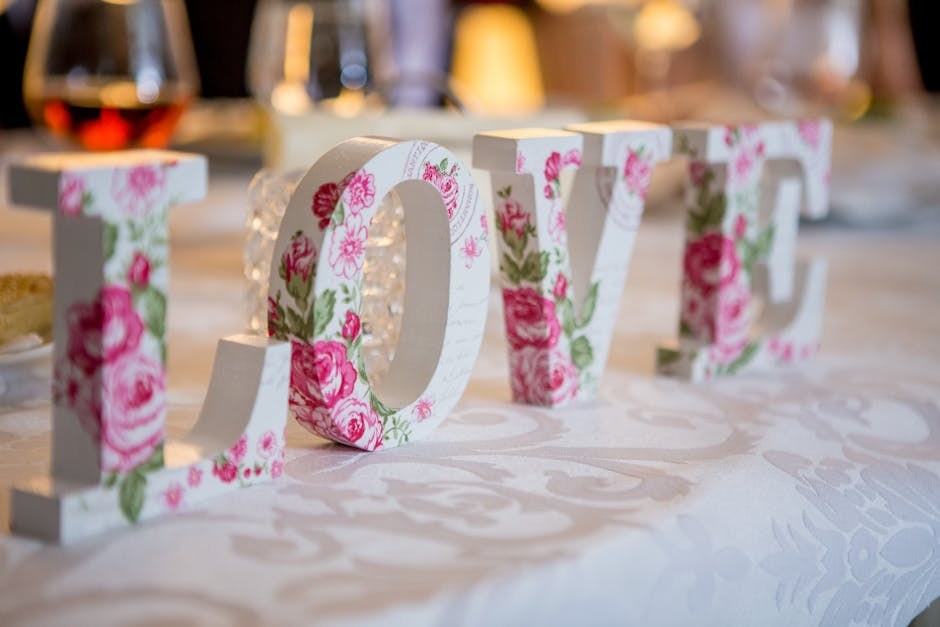Every long-term bond weathers occasional squalls – stress at work, missed signals, clumsy words – but a constant cycle of dizzying highs followed by crushing lows points to something different. That kind of volatility is not romantic chemistry; it’s a pattern that drains energy, blurs judgment, and erodes trust. If you have begun to wonder whether the chaos you’re living inside has become normal, consider this your invitation to pause. A tumultuous relationship may feel addictive in its intensity, yet stability, respect, and steadiness are the qualities that allow love to last. What follows reframes the idea of “passion” and offers clear ways to recognize the pattern and begin to calm it.
What “tumultuous” really means in love
In everyday language, “tumultuous” describes agitation, uproar, and disorder. In intimate life, a tumultuous relationship is one in which emotional intensity dominates – arguments escalate quickly, moods swing hard, and small issues balloon into major ruptures. The connection can feel overwhelming in both directions: ecstatic during the highs, unbearable during the lows. Crucially, the intensity itself becomes the weather system of the partnership, setting the forecast day after day.
That rhythm can masquerade as deep connection – the reconciliations are dramatic, the declarations tender, the makeups poetic – but underneath, the nervous system is on constant alert. You may notice you’re bracing for the next wave even during quiet moments. A healthy bond makes room for difference and discomfort without tipping you into panic; a tumultuous relationship keeps you skimming along the surface of safety, never quite able to exhale.

How a chaotic pattern takes hold
Few couples intend to build volatility. Often, good intentions collide with unexamined habits: avoiding hard topics until they explode; idealizing the other person when things are smooth; using reconciliation as proof that the rupture was “worth it.” Over time, the pattern trains both partners to wait for extremes. The ordinary gestures that sustain love – steady check-ins, thoughtful boundaries, follow-through – get crowded out by firefighting. If you’ve started to believe that instability equals depth, it’s worth reviewing the signs that your connection is stuck in turbulence.
Signs your bond is trapped in turbulence
Recurring battles about the same themes. The topic might vary on the surface – the dishes one week, a late text the next – but the engine underneath never changes. In a tumultuous relationship, the conflict loops because the pattern, not the problem, is running the show. Resolution gives way to temporary truces, and the next flare-up arrives right on schedule.
Quiet manipulation replaces direct requests. Guilting, stonewalling, tit-for-tat criticism, or sudden cold shoulders are all forms of control. Instead of saying, “I need reassurance,” one partner punishes or withdraws. A tumultuous relationship makes these maneuvers feel ordinary, even though they slowly dismantle trust.

Dependence masquerades as devotion. When your mood rises and falls with your partner’s responses, it’s tough to tell care from craving. You might cling to the connection because the alternative feels like a free fall. That’s a hallmark of a tumultuous relationship: the bond soothes anxiety for a moment, then stokes it again.
Withholding until you blow. You swallow discomfort to “keep the peace,” then detonate when the pressure becomes unbearable. The cycle rewards silence – until silence becomes the fuse. Partners in a tumultuous relationship often confuse restraint with harmony, only to discover it breeds resentment.
Overrating the highs. When things are pleasant, you crown the relationship perfect and ignore unresolved issues. The relief is intoxicating; the brain uses the calm as proof that the storm is over. In a tumultuous relationship, those highs are short-lived because they rest on denial, not repair.

Catastrophizing the lows. A disappointing evening or tense conversation becomes “the end.” You toggle between absolute commitment and absolute despair. The middle ground – curiosity, patience, negotiation – evaporates in a tumultuous relationship, where extremes set the tone.
Polling friends instead of collaborating. “Should I stay? Should I go?” becomes a weekly chorus. External validation replaces direct dialogue. Advice from a chorus of voices can soothe temporarily, but the only productive conversation is with the person sitting across from you. In a tumultuous relationship, outsourcing decisions keeps the cycle alive.
On-and-off patterns. Breakups become intermissions rather than endings, and reunions arrive without new agreements. A tumultuous relationship often features dramatic exits and equally dramatic returns – passion surges, then the same old issues reappear because nothing substantive has changed.
Fighting to win instead of to understand. Debates turn into competitions. Sarcasm scores points; humility feels like surrender. In a tumultuous relationship, partners see each other as opponents, not teammates. Outcomes are measured in victories, not solutions.
Cruel language and character attacks. Name-calling and contempt are corrosive. Even when apologies follow, the residue lingers. If put-downs have become common, the environment is no longer merely tense – it’s unsafe for tenderness.
Any physical aggression. Shoves, grabs, thrown objects, or “minor” hits are not minor. Physical intimidation turns conflict into danger. A tumultuous relationship may normalize this under the banner of passion; it is not passion – it is harm. Prioritize safety and boundaries immediately.
Emotional absenteeism. You live side by side but feel miles apart. Important moments go unshared; attempts to connect fall flat. In a tumultuous relationship, presence becomes inconsistent – attentive one day, unreachable the next.
Explosive anger at small triggers. A delayed text, a misplaced item, a harmless joke lights a fuse. The scale of the reaction doesn’t match the event. That mismatch is classic in a tumultuous relationship, where unprocessed feelings seek any exit.
Reason takes a back seat. When adrenaline spikes, logic shuts down. You rehearse arguments in your head rather than listening in real time. A tumultuous relationship rewards quick retorts over careful thought, keeping both of you stuck in reactivity.
Dishonesty creeping in. You start hiding the full story to avoid a blowup – omitting details, rounding the truth, telling “harmless” lies. Those shortcuts corrode reliability. In a tumultuous relationship, secrecy feels self-protective; in reality, it deepens insecurity on both sides.
Gaslighting dynamics. One partner rewrites history or denies clear events, leaving the other confused about their own memory. In a tumultuous relationship, this control tactic amplifies self-doubt and keeps the cycle of volatility spinning.
Breaches of sexual or romantic agreements. Infidelity – unless explicitly permitted within mutually agreed boundaries – destabilizes the foundation. A turbulent culture in the relationship often sets the stage for impulsive choices and painful fallout.
Self-interest eclipses partnership. Needs stop being negotiated; they are imposed. Scheduling, intimacy, money, or family decisions get shaped around one person’s comfort. That imbalance is another driver of a tumultuous relationship.
Chronic jealousy. Suspicion becomes the default. Phones are checked, friends are interrogated, neutral interactions feel threatening. A tumultuous relationship magnifies insecurity until it governs the connection.
Possessiveness and control. Demands for constant updates, restrictions on friends or activities, or monitoring whereabouts signal a climate of fear. Control may look like care from the inside; from the outside, it is a visible sign of a tumultuous relationship.
It’s important to underscore that not all friction is harmful. Disagreement is inevitable where two full humans meet. What separates healthy conflict from chronic chaos is the ability to stay respectful, to slow down, and to reach durable agreements. When you can’t, and the cycle above keeps repeating, you’re likely navigating a tumultuous relationship rather than a challenging season.
Practical moves to calm the chaos
The goal isn’t to eliminate emotion – passion and vulnerability are the lifeblood of intimacy – but to change the way emotion is handled. Below are concrete shifts that reduce volatility and build steadiness. Notice that they are simple, not easy. They require repetition, consistency, and mutual buy-in.
Revisit why you chose each other. Write down what drew you in and what still feels true. Distinguish between who your partner is and what they give you. In a tumultuous relationship, clarity about values helps separate genuine love from fear of being alone.
Ask whether they are still aligned with your picture of them. People evolve; so do relationships. Can you love who they are now – not a memory or a fantasy? If the answer is no, a tumultuous relationship will keep demanding a version of them that no longer exists.
Measure the spillover. Take stock of how the pattern affects friendships, work, health, and family. If the turbulence is crowding out the rest of your life, reorder your priorities. A calmer daily structure makes it harder for a tumultuous relationship to dictate your every choice.
Weigh the mood ledger. Over a typical month, are you mostly steady and content, or mostly braced and depleted? This isn’t about perfect days; it’s about the baseline. If the lows dominate, the relationship’s culture needs to change.
Stop letting highs erase the lows. Celebrate tender moments, but do not use them as proof that problems vanished. Agree to return to unresolved topics after the glow fades. That single habit prevents a tumultuous relationship from resetting the clock to zero after every sweet weekend.
Have a calm-state conversation. Don’t wait for an argument to propose new ground rules. Choose a neutral time, name the pattern without blame – “we escalate fast; I want us to feel safer” – and ask for collaboration. A tumultuous relationship begins to change when both people commit, out loud, to different behavior.
Redesign your conflict playbook. Replace point-scoring with problem-solving: use time-outs when voices rise, reflect back what you heard, ask what outcome would feel fair to both. Track one agreement you can keep this week. Small, reliable repairs do more than grand apologies in a tumultuous relationship.
Choose the path: separation or structured help. If you cannot build safety together right now, step back or bring in a professional guide. Coaching or therapy offers a neutral arena to learn new moves; a thoughtful separation can create space to reset. Either option is more honest than pretending a tumultuous relationship will somehow fix itself.
Recenter on personal steadiness. Sleep, movement, nourishing food, time with friends, creative play – these are not luxuries. They are the scaffolding that keeps your nervous system grounded. When you are steadier, a tumultuous relationship has less power to yank you to extremes, and you can make clearer decisions about the future.
If you recognized yourself in several of the signs above, take that as information, not indictment. The pattern says more about what you’ve practiced than who you are. Practice different moves and the climate will change. Should danger be present, secure your safety first – unwaveringly. If there is mutual willingness and care, small, repeatable agreements can convert volatility into sturdiness. And if willingness is absent, honoring that truth is its own form of care. You deserve a daily life where calm is not a rare guest but a regular resident – the opposite of a tumultuous relationship – and you are allowed to build it.